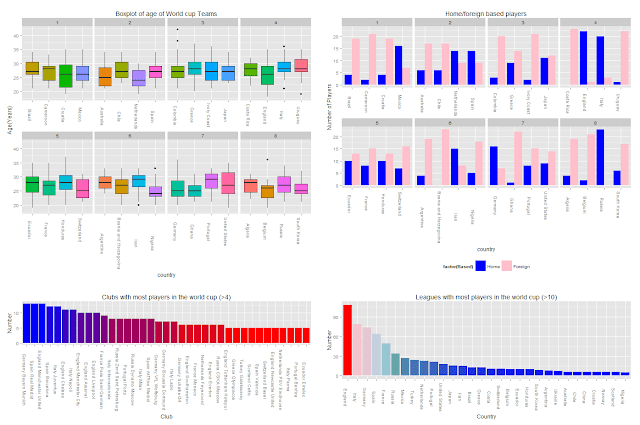
The data shows that the youngest team is the Netherlands(Dutch) team. Only Mexico, Netherlands, Spain, England, Italy, Russia, germane and Iran have more home-based players than foreign based players. Most teams have less players based in their home countries. The European clubs dominate the number of clubs with the most players in the world cup (again not a surprise)!! The world cup 2014 appears to be a sort of "European Cup"!!
Links to the scripts and input data
